
Fitness tips for men in their 50s age

Maintaining good health and fitness becomes even more crucial for men in their 50s in order to improve general wellbeing and fight the consequences of aging.
Men in their 50s can benefit especially from the following fitness advice: -
Speak to your doctor, It's crucial to speak with your doctor before beginning any new fitness plan, particularly if you have current medical ailments or concerns. Your doctor can offer specific advice and assistance in evaluating your present state of health.
Balance cardio and strength training, Include a variety of cardio exercises in your fitness program, such as walking, running, swimming, and cycling, as well as strength workouts, such as weightlifting and resistance training. While strength training preserves muscle mass and bone density, cardio promotes heart health.
Make flexibility and mobility a priority.
As you get older, maintaining flexibility and movement is essential to avoiding accidents and joint issues. Stretching, yoga, or Pilates can be incorporated into your regimen to increase flexibility and balance.
Warm-up and cool-down, Before beginning any physical activity, always warm-up, and cool-down afterward. While cooling down promotes body recovery and lessens stiffness after exercise, warming up primes your muscles and joints for physical activity.
Observe your body, Keep track of how your body reacts to exercise. Do not overexert yourself or ignore pain signals. Rest and, if required, seek medical advice if you feel discomfort or odd symptoms.
Drink lots of water all day long, especially before, during, and after physical activity to stay hydrated. For the maintenance of general health and energy levels, adequate water is crucial.
Sleep sufficiently. Aim for seven to nine hours of good sleep each night. Sleep that is restorative is essential for healing and for promoting optimal bodily performance.
A balanced diet high in fruits, vegetables, whole grains, lean proteins, and healthy fats is the key to maintaining a healthy diet. Reduce your use of processed meals, sugary beverages, and excessive alcohol.
Manage your stress
Prolonged stress can harm your health. Take part in stress-relieving activities including deep breathing exercises, meditation, hobbies, and time spent with loved ones.
Be dependable, Create a regular fitness schedule and follow it. To achieve and maintain good health and fitness, consistency is essential.
If necessary, adjust your routines: As you become older, you might need to adjust your workouts to account for any physical restrictions or injuries. If low-impact workouts are required, keep that in mind, and always stay within your limits.
Pay attention to your joints by doing exercises that strengthen and stabilize your joints, such as leg raises, squats, and planks.
Maintaining social relationships and taking part in group activities will help your mental health and general wellbeing, so be socially engaged.
Every person is unique, therefore it's crucial to customize your workout regimen to meet your unique needs and objectives. Avoid comparing yourself to others and acknowledge each accomplishment, no matter how tiny. You may maintain an active and rewarding lifestyle well into your 50s and beyond with consistent work and a focus on general health.
Monitor your heart rate
During workouts, keep an eye on your heart rate by purchasing a fitness tracker or heart rate monitor. This will allow you to determine how intense your workouts are and make sure you are exercising within safe boundaries.
Cross-training, Include a range of workouts in your schedule. Cross-training helps you engage multiple muscle groups and eliminates boredom while lowering your chance of overuse problems.
Avoid spending too much time sitting down
If you work a sedentary job, try to stand up, stretch, or go for little walks throughout the day. Long periods of sitting can make you stiff and be bad for your health.
Include balancing exercises, As you get older, your sense of balance may deteriorate, increasing your risk of falling. To increase stability, perform yoga positions or other balance exercises.
A strong core is crucial for posture, balance, and general functional fitness, so don't forget about it. Include core-targeting workouts like planks, crunches, and pelvic tilts in your routine.
Play recreational activities
Playing sports like tennis, golf, or swimming can make your fitness regimen more enjoyable while also keeping you socially and physically engaged.
Avoid lifting weights too much, While strength training is important, be careful not to lift weights too much as this could raise the chance of injury. Put an emphasis on good form and moderate weights.
Gradually increase intensity, To avoid overexertion, start cautiously and gradually increase the intensity and duration of your exercises whether you're new to exercise or getting back into shape after a hiatus.
Use the right shoes: Spend money on supportive, cozy athletic shoes that fit properly and offer enough cushioning for your workouts.
Get outside, Try to exercise outside as much as you can to enjoy the benefits of nature, sunlight, and fresh air.
If you have joint problems or a history of injuries, think about low-impact options like swimming, cycling, or utilizing an elliptical machine to lessen the strain on your joints.
Maintain your motivation. Although fitness journeys might have ups and downs, long-term success depends on maintaining your motivation. Set reasonable objectives, monitor your success, and treat yourself.
Give your body time to heal after vigorous exercise; don't disregard it. Your muscles can mend and become stronger with enough rest.
Maintain regular health examinations, Early diagnosis of potential health disorders requires routine health examinations. This can assist you in resolving any issues quickly.
Set reasonable goals and accept that your body might not function as well as it once did. Set attainable objectives that are consistent with your present abilities and way of life.
Maintaining a fit and active lifestyle is the aim of a lifelong path toward fitness. Be kind to yourself, maintain a positive attitude, and take pleasure in the process of caring for your body and mind. Consider speaking with a skilled fitness trainer or exercise specialist who can create a custom program for you if you're unsure about your fitness plan or have particular health issues.
Precautions for warm weather
Be careful when working out outside in hot weather to prevent heat-related problems. Remain hydrated, dress appropriately, and exercise in the morning or late afternoon when it's cooler.
Manage inflammation, Chronic inflammation may become more prevalent as you age. Focus on an anti-inflammatory diet full of fruits, vegetables, nuts, and fish with good fats like omega-3 to reduce inflammation.
Include functional activities, Functional exercises can help you keep your mobility and independence as you age by simulating ordinary movements. Squats, lunges, and lifting weights are among examples.
Stay social by signing up for sports teams, taking group fitness classes, or working out with friends to stay inspired and take pleasure in the social components of physical activity.
Workout modifications for injuries
If you already have injuries, consult a physical therapist or certified trainer to adapt exercises and create a safe workout schedule that takes your condition into account.
Use appropriate form: To minimize the chance of injury and increase the efficacy of your workouts, concentrate on maintaining proper form while performing bodyweight exercises or lifting weights.
Control your testosterone levels because they tend to drop as you get older. Hormone balance can be preserved by regular exercise, sound sleep, and a nutritious diet.
Exercises to increase flexibility are essential for reducing stiffness and increasing range of motion. Incorporate dynamic stretching, yoga, and tai chi into your program.
Set reasonable rest times to give your body enough time to recuperate from strenuous exercise. You may need more time to recover as you get older, so pay attention to your body and don't overtrain.
Take group exercise classes into consideration; they can offer direction, inspiration, and qualified guidance. Select classes based on your interests and degree of fitness.
Be mindful, Stress can have a harmful influence on your health. To relieve tension and encourage relaxation, use mindfulness techniques like deep breathing or meditation.
Track your progress by noting your workouts, objectives, and achievements in a fitness diary or using a monitoring app. Monitoring your successes can increase your drive and point up areas for development.
Limit alcohol intake; excessive drinking might have a detrimental impact on your overall health and fitness objectives.
In order to lessen the risk of injuries, place a strong emphasis on injury prevention. This is especially important for the knees, shoulders, and lower back.
Ensure proper hydration before, during, and after workouts. This will help you perform better, recover faster, and maintain good health. Don't simply drink water when you're working out; do so all day long.
Assessing your fitness objectives on a regular basis will help you stay motivated and make progress. Reevaluate your fitness goals sometimes and change your regimen accordingly.
Maintain a positive outlook since it will help you succeed in staying fit as you age. Accept the journey and keep your attention on the progress you're making in your life.
Age is just a number, and you may continue to live an active, healthy, and satisfying life well into your 50s and beyond with the correct attitude. Always pay attention to your body, adjust as necessary, and put your general wellbeing first. Consult with healthcare or fitness professionals who can direct you on your fitness path if you have any unique health concerns or require individualized counsel.
Interval training for the heart, Include interval training in your heart-related exercises. Alternating between short bursts of high intensity exercise and rest periods can increase fat burning and enhance cardiovascular fitness.
Create a playlist of your favorite uplifting songs for your workouts to keep you inspired and enthusiastic while you work out.
Engage in physical activity with your family by taking them on a hike, a bike ride, or to a sporting event. It not only deepens your relationship but also inspires everyone to continue engaging in physical activity.
Watch your posture
Be mindful of your posture when working out and going about your regular business. Injury and discomfort can result from poor posture. Keep your shoulders back and your spine straight.
Think about getting expert advice, If you're new to exercise or want to improve your fitness, think about hiring a certified personal trainer who can create a training schedule that is specific to your requirements and objectives.
Take good care of your feet as they grow more important as you age. Invest in good shoes, and if you have foot problems, think about consulting a podiatrist for advice.
Exercise modifications for joint problems
If you have joint troubles, think about doing low-impact workouts like swimming or cycling. Additionally, using resistance bands to build muscles can be a kinder approach to do it.
Maintain a blood pressure reading, Check your blood pressure frequently because hypertension is more prevalent in older people. For heart health, blood pressure control is crucial.
Workouts that target the entire body should be prioritized. Squats, deadlifts, and push-ups are examples of exercises that simultaneously work several muscle groups. For total strength, these compound motions are efficient and effective.
Laugh and enjoy yourself, Laughter has several health advantages, including lowering stress and elevating mood. Discover humorous ways to live, and have pleasure in your fitness path.
Continue to learn about topics relating to health, nutrition, and exercise to stay educated. You can make better decisions for your wellbeing by staying educated.
While high-impact workouts can be useful, balance them out with low-impact exercises to give your joints a break and lower your chance of overuse issues.
Maintain your routine's consistency if you want to see improvements and go forward. Despite your busy schedule, stick to your fitness plan.
Prioritize quality above quantity because as you become older, recovery becomes more important. Rather than aiming for a high volume of exercise, concentrate on the quality of your workouts and pay attention to your body.
Don't forget about mental fitness
Keep your mind active by doing puzzles, reading, or learning new skills to keep it sharp.
After exercising, eat a balanced lunch or snack that includes a combination of protein and carbohydrates to help muscle repair and restore energy.
Recognize and appreciate your fitness efforts, no matter how great or small, by celebrating them. Giving oneself a reward can help you keep up good behavior.
Keep yourself hydrated when it's cold outside because exercising can cause dehydration even in lower temperatures. Even if you don't frequently feel thirsty, drink plenty of water.
Fitness in your fifties isn't about attempting to go back in time; rather, it's about embracing an active and healthy lifestyle that works with your present talents and objectives. You can benefit from the various physical and psychological advantages of maintaining fitness as you age if you are committed, consistent, and have a good outlook. Always put your health and safety first, and seek professional medical advice when necessary. Happy workout adventure!
Take advantage of outdoor activities to start active while taking in the fresh air and nature, such as hiking, gardening, or playing sports.
Maintain motivation despite obstacles
To keep things interesting, set oneself exercise challenges. It can involve performing a given quantity of pushups, covering a certain distance on foot, or attempting a novel fitness regimen.
Exercise your mind and body, Tai chi, qigong, and meditation all help you become more flexible and balanced while also promoting relaxation and lowering your stress levels.
With an emphasis on bone health, incorporate weight-bearing activities like jogging, dancing, or walking to preserve bone density and lower your chance of developing osteoporosis.
Follow up on your progress in several ways
Along with documenting your workouts, keep an eye on other elements of your life, including better sleep, more vitality, or less worry.
Include resistance band exercises, Resistance bands are an easy, portable way to increase resistance in your workouts and strengthen your muscles.
Keep a strong social network, Keeping in touch with friends and family can have a great effect on your mental health, which can help your physical health.
Stay hydrated when exercising in high-altitude areas
When exercising in high-altitude situations, it's especially important to stay hydrated because the body tends to lose more water there.
Use massage balls or foam rollers, Tools for self-massage can assist ease muscle tension and lower the risk of injury. Include them in the warm-up and cool-down exercises you perform.
Be aware of your limits, Although it's important to push yourself, be cautious of your body's limitations and refrain from pushing yourself too far, particularly if you have health issues.
Include balance and stability exercises
Taking part in balance-testing activities, including standing on one leg, can help prevent falls and maintain mobility.
Make advantage of technology and fitness apps
Consider fitness as a way to improve your life at any point as you become older and embrace the insights and experiences that come with it.
Be kind to yourself. As you become older, results could take longer to come about, but stay committed to your fitness path and enjoy every victory.
Ask friends and relatives for help: Tell your loved ones about your fitness objectives so they can support you and help you stay accountable.
Adjust your routine as necessary
Be flexible with your workout program and modify it as necessary to account for changes in your lifestyle and how your body feels.
Maintaining a healthy, active lifestyle that improves your general quality of life is the aim of fitness in your fifties. Pay attention to your body, enjoy your workouts, and look for pursuits that make you happy and fulfilled. Always put safety first, and seek advice from medical specialists if you have any health issues. Accept the trip and remember that making an investment in your health and fitness now will pay dividends later.
Support joint health with omega-3 fatty acids, Fish oil and flaxseed oil include omega-3 fatty acids that can help lessen joint inflammation and enhance joint health.
Maintain recovery days, Include rest days in your weekly workout schedule to give your body enough time to heal and repair.
During warm-ups, practice your balance and flexibility: To get your body ready for the workout ahead, execute dynamic stretches and balance drills throughout your warm-up period.
Stay away from overtraining
Pushing oneself too hard without enough rest might result in burnout and an elevated risk of injury. When your body tells you to take a day off, do it.
Train your brain, To keep your mind sharp and support brain health, take part in puzzles or cognitive exercises.
Use the right lifting techniques, To avoid straining your back when lifting weights or other large objects, always remember to use your legs and core muscles.
Stay hydrated during the day, but cut back on your water intake just before bed to prevent frequent toilet breaks from disturbing your sleep.
Take swimming or water aerobics, for example. These low-impact activities have excellent cardiovascular and muscular advantages without putting undue strain on joints.
Set measurable, defined objectives
To stay motivated and focused, set specific training goals and constantly monitor your progress.
By adopting meditation or mindfulness techniques into your everyday routine, you can lower stress and improve your general well-being.
Learn how to properly warm up and cool down, Spend some time doing the right warm-up activities to get your body ready for more strenuous action by progressively increasing blood flow to the muscles. Cool down afterwards to promote healing.
Exercise caution when engaging in extreme sports or high-risk activities
To avoid injury, undertake these activities with the right training and safety precautions.
Keep track of your heart rate while exercising to make sure you're working at a level of intensity that is appropriate for your age and degree of fitness.
Concentrate on a healthy diet for energy: A healthy diet is crucial for a person's general wellbeing and energy levels. To support your active lifestyle, feed your body foods that are high in nutrients.
Maintain proper posture throughout the day, whether you're standing or sitting for long amounts of time at a desk, to lessen the strain on your spine.
Engage in physical activity with your partner to make fitness a shared experience that improves your relationship. Involve your partner in fitness.
Accept a long-term outlook
Fitness in your 50s is about making sustainable lifestyle adjustments rather than fast cures. Accept the journey and concentrate on your long-term well-being.
Consider your accomplishments when you look back on your fitness journey and utilize any setbacks as a chance to learn and modify your strategy.
Being active in your 50s can have several positive effects on your physical, mental, and emotional health. Fitness is a lifelong pursuit. Accept the chance to look after your body and mind and reap the benefits of an active, healthy lifestyle for years to come.
To keep motivated and to support one another, consider taking part in fitness challenges or events with friends or coworkers.
Self-myofascial release with a foam roller, Regularly rolling out your muscles with a foam roller will help loosen up your muscles, increase circulation, and lower your chance of injury.
Keep your form in mind when doing strength training, To prevent injuries and get the most out of your workouts, proper form is essential. To be sure you're exercising with the proper form, think about working with a fitness expert.
Modify workouts when ill or injured, Give yourself time to heal before starting a rigorous workout regimen if you're feeling under the weather or recovering from an injury.
Use ways for reducing stress,Your health can suffer as a result of ongoing stress.
To handle stress, use techniques like deep breathing, meditation, or progressive muscle relaxation.
Don't forget to warm up and cool down before and after every workout to prepare your body for activity. After exercise, cool down to gradually lower heart rate and reduce muscle discomfort.Establish a regular sleeping schedule: Aim for a consistent sleep schedule with regular bedtimes and wake-up times. For recuperation and general wellbeing, getting enough good sleep is essential.
Reduce your intake of processed and sugary foods
Processed foods and added sugars can cause weight gain and inflammation.
Pay attention to your body's signals, If you feel pain or discomfort while exercising, stop or change your activity. Injury might result from disobeying your body's cues.
Try new sports or exercises. Trying new sports or exercises can be a fun way to challenge yourself and keep fitness interesting.The key to maintaining better movement and doing daily tasks with ease is flexibility. Regular stretches and mobility exercises can help you achieve this.
Encourage intestinal health, To support a healthy gut, which is necessary for vitamin absorption and overall wellbeing, include probiotics and fiber in your diet.
Drink plenty of water while traveling to prevent dehydration, whether you're taking a long flight or a road trip.
Be wary of your alcohol intake, Alcohol abuse might harm your overall health and fitness objectives. Drink drink sparingly and enjoy.Employ gradual overload Increase your workouts' resistance or intensity gradually to continue pushing your body and achieving results.
Participate in seasonal pursuits, Utilize seasonal sports or hobbies to change up your exercise regimen, such as cycling in the spring or skiing in the winter.
Consider HIIT (high-intensity interval training), Exercises like HIIT can increase cardiovascular fitness and burn calories quickly and efficiently.
Plan your relaxation days wisely
To give your body enough time to recuperate properly from your more strenuous workouts, schedule rest days around them.Be careful not to compare your fitness journey to that of others. Instead of comparing yourself to others, concentrate on own advancements and improvements.
Fitness encompasses not just physical capability but also mental toughness and general wellbeing. Enjoy the journey, pay attention to your body, and make sustainable decisions that support your fitness and health objectives. Keeping active and taking care of yourself can help you enjoy life to the fullest when you enter your 50s and beyond.

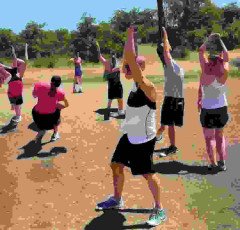





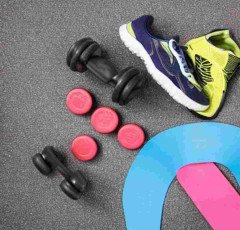


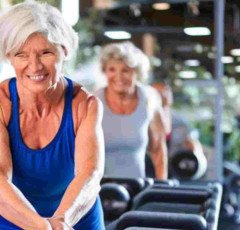


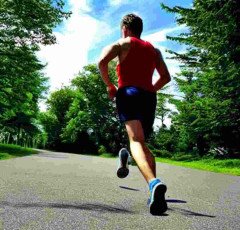


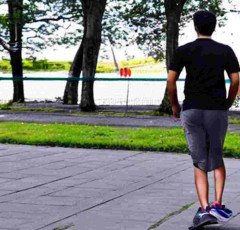


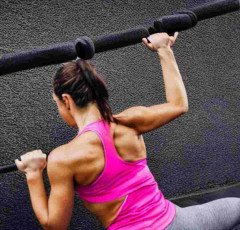

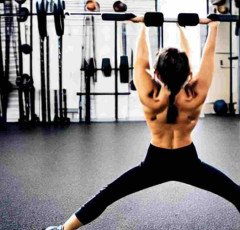




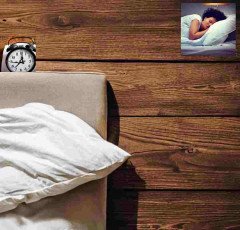

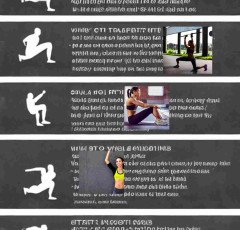




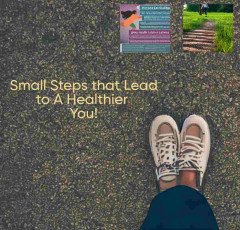













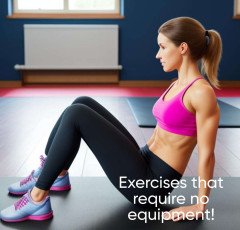

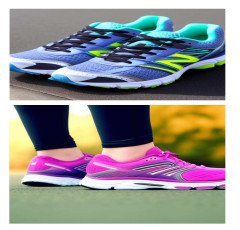


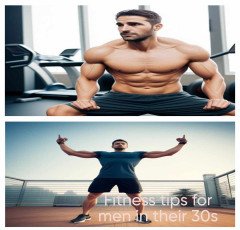



















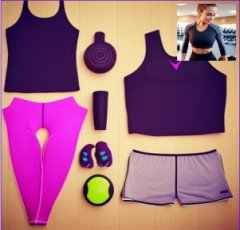














 Only For The United States
Only For The United States  Dell Laptop
Dell Laptop  ASUS Laptop
ASUS Laptop  The Click Engine
The Click Engine  Crocs
Crocs  SEO Checklist
SEO Checklist  NordVPN
NordVPN  Bathroom Mirrors
Bathroom Mirrors  Door Handle Collection
Door Handle Collection  Pet Care Products
Pet Care Products  TitTok Revolution
TitTok Revolution  Wireless Bluetooth Earphones
Wireless Bluetooth Earphones  Best Selling Books
Best Selling Books  Unlimited access to classes on illustration, photography, design, film, music
Unlimited access to classes on illustration, photography, design, film, music  Artificial Intelligence
Artificial Intelligence  4k Projector For Home
4k Projector For Home  BEST SELLER TOP10
BEST SELLER TOP10  Hello Theme
Hello Theme  HP Laptop
HP Laptop  Kitchen Daily Use
Kitchen Daily Use  Sennheiser
Sennheiser  Amazon Best Selling Products
Amazon Best Selling Products  Best Sellers On Amazon
Best Sellers On Amazon  Wall Lamp
Wall Lamp  Best Phone
Best Phone  Samsung Mobile
Samsung Mobile  Online Technology Classes
Online Technology Classes  Duke T Shirts
Duke T Shirts  Top Rated From Amazon
Top Rated From Amazon  Puma (Clothing & Accessories)
Puma (Clothing & Accessories)  Healthy Ingredients
Healthy Ingredients  Acer Laptop
Acer Laptop  Adidas Shoes
Adidas Shoes  Prime Video
Prime Video  RPM 3.0
RPM 3.0  Realme Smart Phone
Realme Smart Phone  ELECTRONIC ACCESSORIES
ELECTRONIC ACCESSORIES  Home Decor Items
Home Decor Items  Best Robotic Vacuum Cleaners
Best Robotic Vacuum Cleaners  Unreal Engine 5 For Beginners Learn The Basics Of Virtual Production
Unreal Engine 5 For Beginners Learn The Basics Of Virtual Production  Air Purifier for Home
Air Purifier for Home  iPhone cable
iPhone cable  NordPass
NordPass  Dual USB Car Charger
Dual USB Car Charger  Best Home Appliances
Best Home Appliances  Echo Dot - Smart speaker with Alexa
Echo Dot - Smart speaker with Alexa  Motion Sensor Light
Motion Sensor Light  All Wireless Products
All Wireless Products  Kitchen Tap
Kitchen Tap  Graphics & Design
Graphics & Design 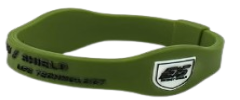 Wristbands
Wristbands  Men Clothing
Men Clothing  Essentials for Gamers
Essentials for Gamers  One World Collection
One World Collection  LCD Writing Tablet
LCD Writing Tablet  Wireless Gaming Mouse
Wireless Gaming Mouse  Smart Doorbell
Smart Doorbell  Smart Watches
Smart Watches  Favorite Company (Cuelinks)
Favorite Company (Cuelinks)  Stylish Sneakers by Red Tape
Stylish Sneakers by Red Tape  Rakhi
Rakhi  ASPINAL LONDON
ASPINAL LONDON  Hanging Lights For Living Room
Hanging Lights For Living Room  Apple iPhone
Apple iPhone  The Secret Email System
The Secret Email System  Digital Voice Recorder
Digital Voice Recorder  Online Marketing
Online Marketing  Creative Brief For Video Shoot
Creative Brief For Video Shoot  SOFAS
SOFAS  Women Fashion
Women Fashion  Hot Bags For Pain Relief
Hot Bags For Pain Relief  1150+Trendy kids coloring pages Bundle
1150+Trendy kids coloring pages Bundle  NordLocker
NordLocker 


















